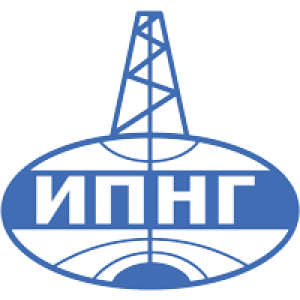The Promoting Role of Ni on In2O3 for CO2 Hydrogenation to Methanol
Publication type: Journal Article
Publication date: 2023-01-18
scimago Q1
wos Q1
SJR: 3.782
CiteScore: 19.5
Impact factor: 13.1
ISSN: 21555435
PubMed ID:
36776383
General Chemistry
Catalysis
Abstract
Ni-promoted indium oxide (In2O3) is a promising catalyst for the selective hydrogenation of CO2 to CH3OH, but the nature of the active Ni sites remains unknown. By employing density functional theory and microkinetic modeling, we elucidate the promoting role of Ni in In2O3-catalyzed CO2 hydrogenation. Three representative models have been investigated: (i) a single Ni atom doped in the In2O3(111) surface, (ii) a Ni atom adsorbed on In2O3(111), and (iii) a small cluster of eight Ni atoms adsorbed on In2O3(111). Genetic algorithms (GAs) are used to identify the optimum structure of the Ni8 clusters on the In2O3 surface. Compared to the pristine In2O3(111) surface, the Ni8-cluster model offers a lower overall barrier to oxygen vacancy formation, whereas, on both single-atom models, higher overall barriers are found. Microkinetic simulations reveal that only the supported Ni8 cluster can lead to high methanol selectivity, whereas single Ni atoms either doped in or adsorbed on the In2O3 surface mainly catalyze CO formation. Hydride species obtained by facile H2 dissociation on the Ni8 cluster are involved in the hydrogenation of adsorbed CO2 to formate intermediates and methanol. At higher temperatures, the decreasing hydride coverage shifts the selectivity to CO. On the Ni8-cluster model, the formation of methane is inhibited by high barriers associated with either direct or H-assisted CO activation. A comparison with a smaller Ni6 cluster also obtained with GAs exhibits similar barriers for key rate-limiting steps for the formation of CO, CH4, and CH3OH. Further microkinetic simulations show that this model also has appreciable selectivity to methanol at low temperatures. The formation of CO over single Ni atoms either doped in or adsorbed on the In2O3 surface takes place via a redox pathway involving the formation of oxygen vacancies and direct CO2 dissociation.
Found
Nothing found, try to update filter.
Found
Nothing found, try to update filter.
Top-30
Journals
|
1
2
3
4
5
6
7
8
|
|
|
ACS Catalysis
8 publications, 8.6%
|
|
|
Chemical Engineering Journal
8 publications, 8.6%
|
|
|
Applied Catalysis B: Environmental
4 publications, 4.3%
|
|
|
Applied Surface Science
4 publications, 4.3%
|
|
|
Catalysis Science and Technology
3 publications, 3.23%
|
|
|
Separation and Purification Technology
3 publications, 3.23%
|
|
|
Molecular Catalysis
3 publications, 3.23%
|
|
|
ACS Sustainable Chemistry and Engineering
3 publications, 3.23%
|
|
|
Fuel
3 publications, 3.23%
|
|
|
Journal of Physical Chemistry C
3 publications, 3.23%
|
|
|
ChemCatChem
2 publications, 2.15%
|
|
|
Catalysis Today
2 publications, 2.15%
|
|
|
ACS Omega
2 publications, 2.15%
|
|
|
Nature Communications
2 publications, 2.15%
|
|
|
Chinese Journal of Catalysis
1 publication, 1.08%
|
|
|
Chemical Communications
1 publication, 1.08%
|
|
|
Ceramics International
1 publication, 1.08%
|
|
|
Sensors and Actuators, B: Chemical
1 publication, 1.08%
|
|
|
Energy & Fuels
1 publication, 1.08%
|
|
|
Inorganic Chemistry
1 publication, 1.08%
|
|
|
ChemPhysChem
1 publication, 1.08%
|
|
|
Physical Chemistry Chemical Physics
1 publication, 1.08%
|
|
|
Russian Chemical Reviews
1 publication, 1.08%
|
|
|
Science China Chemistry
1 publication, 1.08%
|
|
|
JACS Au
1 publication, 1.08%
|
|
|
Science China Materials
1 publication, 1.08%
|
|
|
Coordination Chemistry Reviews
1 publication, 1.08%
|
|
|
Chemical Engineering Science
1 publication, 1.08%
|
|
|
Carbon Neutrality
1 publication, 1.08%
|
|
|
Industrial & Engineering Chemistry Research
1 publication, 1.08%
|
|
|
1
2
3
4
5
6
7
8
|
Publishers
|
5
10
15
20
25
30
35
40
|
|
|
Elsevier
40 publications, 43.01%
|
|
|
American Chemical Society (ACS)
23 publications, 24.73%
|
|
|
Royal Society of Chemistry (RSC)
12 publications, 12.9%
|
|
|
Springer Nature
7 publications, 7.53%
|
|
|
Wiley
6 publications, 6.45%
|
|
|
Tsinghua University Press
2 publications, 2.15%
|
|
|
Autonomous Non-profit Organization Editorial Board of the journal Uspekhi Khimii
1 publication, 1.08%
|
|
|
AIP Publishing
1 publication, 1.08%
|
|
|
MDPI
1 publication, 1.08%
|
|
|
5
10
15
20
25
30
35
40
|
- We do not take into account publications without a DOI.
- Statistics recalculated weekly.
Are you a researcher?
Create a profile to get free access to personal recommendations for colleagues and new articles.
Metrics
93
Total citations:
93
Citations from 2024:
74
(79.57%)
Cite this
GOST |
RIS |
BibTex |
MLA
Cite this
GOST
Copy
Cannizzaro F., Hensen E. J. M., Filot I. A. W. The Promoting Role of Ni on In2O3 for CO2 Hydrogenation to Methanol // ACS Catalysis. 2023. Vol. 13. No. 3. pp. 1875-1892.
GOST all authors (up to 50)
Copy
Cannizzaro F., Hensen E. J. M., Filot I. A. W. The Promoting Role of Ni on In2O3 for CO2 Hydrogenation to Methanol // ACS Catalysis. 2023. Vol. 13. No. 3. pp. 1875-1892.
Cite this
RIS
Copy
TY - JOUR
DO - 10.1021/acscatal.2c04872
UR - https://pubs.acs.org/doi/10.1021/acscatal.2c04872
TI - The Promoting Role of Ni on In2O3 for CO2 Hydrogenation to Methanol
T2 - ACS Catalysis
AU - Cannizzaro, Francesco
AU - Hensen, Emiel J. M.
AU - Filot, Ivo A W
PY - 2023
DA - 2023/01/18
PB - American Chemical Society (ACS)
SP - 1875-1892
IS - 3
VL - 13
PMID - 36776383
SN - 2155-5435
ER -
Cite this
BibTex (up to 50 authors)
Copy
@article{2023_Cannizzaro,
author = {Francesco Cannizzaro and Emiel J. M. Hensen and Ivo A W Filot},
title = {The Promoting Role of Ni on In2O3 for CO2 Hydrogenation to Methanol},
journal = {ACS Catalysis},
year = {2023},
volume = {13},
publisher = {American Chemical Society (ACS)},
month = {jan},
url = {https://pubs.acs.org/doi/10.1021/acscatal.2c04872},
number = {3},
pages = {1875--1892},
doi = {10.1021/acscatal.2c04872}
}
Cite this
MLA
Copy
Cannizzaro, Francesco, et al. “The Promoting Role of Ni on In2O3 for CO2 Hydrogenation to Methanol.” ACS Catalysis, vol. 13, no. 3, Jan. 2023, pp. 1875-1892. https://pubs.acs.org/doi/10.1021/acscatal.2c04872.
Profiles












